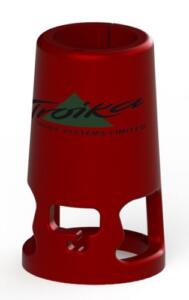When assessing plastic as a substitute for metal, there are many factors to take into consideration. Not all are strictly design-based; other factors can be desirability, finishing options, production cost, or sustainability, to name a few. Plunkett Associates investigate in this blog article.
Motivation can vary widely, from cost down exercises to weight saving and logistics. Whatever the reason and regardless of whether this is a new part or a replacement, plastic is a very different material from metal and must be handled appropriately for the project to succeed.
How do metal and plastic differ from an engineering point of view?
- Plastics tend to have non-linear time-dependent stress/strain behaviour. Below the yield point, metals typically have a nearly linear elastic behaviour.
- Instead of a single melting point, plastics typically have a ‘glass transition temperature’ whereas metals typically have a clearly defined melting point.
- Plastics tend to exhibit ‘creep’ whereas in metals, creep tends to be insignificant.
- Plastics can degrade in air whereas metals corrode.
- Plastics can be affected by bacterial infestation, whereas metals will not.
- Thermal expansion of plastics can be up to 20x higher than in metal.
- Plastics are much slower at dissipating heat than metals. (although there are specific grades now targeted at manufacturing heat sinks)
- The softening and melting temperatures of plastics are much lower than in metals.
- Plastics are more elastic than metals.
- Plastics have a very different inner structure in terms of their chemical bonds as well as the structural arrangement of their macromolecules in comparison to the lattice structure of metals.
So why design in plastic rather than metal?
1) Cost
Generally plastic will be injection moulded although for some low volume/tight tolerance/high specification applications machining will be preferred. Metal, on the other hand, will be machined or cast/machined unless parts are small/complex in which case metal injection moulding (MIM) is an option.

Hence if quantity is present plastic can offer a cost advantage, so long as the material properties are adequate. This also gives rise to one of the reasons for transitioning to plastic, initial sales volumes only warrant machining, but sales take off, and moulding is suddenly a competitive solution. The downside is the part will require redesigning to take full advantage of the material change.
 2) Weight
2) Weight
Stringent weight constraints may also drive material selection to plastics. The aerospace sector is a good example of where weight is a primary driver and despite typically low quantities, moulded or CNC machined plastics are frequently found.
The addition of fillers such as glass or carbon fibres can also radically change plastic properties. This results in materials such as Grillamid, which is sold as a ‘metal replacement’ material.
3) Environmental
Environmental factors can make plastics very attractive as they do not corrode.
4) Surface Finish
Frequently part finish comes for free when moulding components as opposed to additional operations when machining metal. Colour and texture can be used to differentiate a product, and branding can be incorporated, all at a minimal cost.
The decision whether or whether not to use plastic is reliant on exact knowledge of the actual mechanical short and long term stresses to which the component will be exposed over its lifetime. Additional information such as the end-use application along with any environmental conditions such as chemical exposure, extremes of heat or cold are all required before sensible designs can be considered and any decision about material made.
Summary

The ability for plastic parts to be just as tough as metal parts and achieve the same tight tolerances, with fewer secondary operations, plus an overall cost-saving, often creates a win-win argument, in favour of using plastics.
Ultimately, the decision whether or whether not to use plastic is reliant on exact knowledge of the actual mechanical short, and long term stresses to which the component will be exposed over its lifetime. Additional information such as the end-use application along with any environmental conditions such as chemical exposure, extremes of heat or cold are all required before sensible designs can be considered and any decision about material made.
The crux of it is that each part and each project is unique – what works for one may not work for another, as there are so many factors to take into account. For advice and the best solution for your part, please contact us. We will be happy to help.



